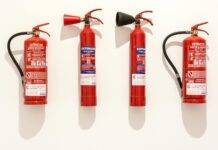
Work at Height Safety Quiz 2024
Safety in any workplace, especially at heights, is paramount to prevent accidents and ensure the well-being of workers. One effective method to reinforce safety practices and knowledge is through a Work at Height Safety Quiz. This article aims to guide you through the significance of such quizzes, their content, and how to prepare for them.
Introduction to Work at Height Safety Quiz
In industries where working at heights is common, safety measures are crucial. The Work at Height Safety Quiz serves as a comprehensive tool to assess and enhance workers’ knowledge about safety protocols, potential risks, and the proper usage of safety equipment.
Understanding Work at Height Risks
Before diving into the quiz, understanding the risks associated with working at heights is crucial. Statistics reveal alarming numbers of accidents related to falls, slips, and improper safety measures. Acknowledging these risks emphasizes the necessity of comprehensive safety awareness.
Components of Work at Height Safety
The quiz covers various components, including equipment, tools, safety protocols, and legal regulations. Mastery of these elements ensures a holistic understanding of safety measures and helps minimize accidents.
Preparing for the Safety Quiz
Proper preparation is key. Study materials encompassing safety guidelines, manuals, and practice exercises aid in readiness for the quiz. Engaging with these resources helps reinforce understanding and retention of safety protocols.
Taking the Quiz
Participation in the quiz not only assesses your current knowledge but also provides insights into areas needing improvement. It covers multiple-choice questions, scenario-based inquiries, and practical applications of safety measures.
Quiz Results and Feedback
Understanding the results is vital. Feedback received post-quiz aids in recognizing strengths and areas that require further attention. Utilizing this feedback fosters continuous improvement.
Post-Quiz Safety Practices
Application of acquired knowledge in real-life scenarios is crucial. Integrating safety measures learned from the quiz into daily practices minimizes risks and contributes to a safer work environment.
Here are some multiple-choice questions (MCQs) on Work at Height Safety Quiz 2024:1. Which of the following is NOT a primary hazard associated with working at heights? A) Falling objects
B) Slips and trips
C) Fatigue
D) Electrical hazards
Answer: D) Electrical hazards
2. What is the minimum height that typically defines “working at height” according to safety regulations? A) 2 meters (6.6 feet)
B) 3 meters (9.8 feet)
C) 4 meters (13.1 feet)
D) 5 meters (16.4 feet)
Answer: A) 2 meters (6.6 feet)
3. Which equipment is essential for preventing falls while working at heights? A) Safety harnesses
B) Safety goggles
C) Earplugs
D) Safety gloves
Answer: A) Safety harnesses
4. What is the recommended frequency for inspecting and maintaining fall protection equipment? A) Monthly
B) Quarterly
C) Annually
D) Before each use and as needed
Answer: D) Before each use and as needed
5. Which factor is crucial in determining the appropriate type of fall protection for a specific task? A) Worker experience
B) Weather conditions
C) Time of day
D) Task complexity
Answer: D) Task complexity
6. What is the correct procedure for ascending or descending a ladder at heights? A) Always carry tools in hand while climbing
B) Face the ladder and maintain three points of contact
C) Skip every other ladder rung for quick ascent
D) Lean backward for better balance
Answer: B) Face the ladder and maintain three points of contact
7. When working on elevated surfaces, what precaution helps prevent overreaching? A) Use of longer tools
B) Stretching exercises
C) Leaning against guardrails
D) Working alone for better maneuverability
Answer: A) Use of longer tools
8. What is the purpose of a “buddy system” in work at height safety? A) To assign blame in case of accidents
B) To ensure no one works alone at heights
C) To compete in completing tasks faster
D) To report incidents to management
Answer: B) To ensure no one works alone at heights
9. What is the recommended action in case of high winds or adverse weather conditions during work at height? A) Continue working with caution
B) Stop work and seek shelter
C) Increase the speed of work to finish sooner
D) Ignore the weather conditions and proceed
Answer: B) Stop work and seek shelter
10. Which authority typically sets the standards and regulations for work at height safety? A) Occupational Safety and Health Administration (OSHA)
B) Environmental Protection Agency (EPA)
C) National Aeronautics and Space Administration (NASA)
D) Federal Emergency Management Agency (FEMA)
Answer: A) Occupational Safety and Health Administration (OSHA)
Importance of Work at Height Safety Culture
Beyond individual efforts, fostering a safety culture collectively impacts workplaces positively. It instills a sense of responsibility, creating safer work environments for everyone.
Conclusion
The Work at Height Safety Quiz serves as a pivotal tool in educating and reinforcing safety measures for those working at heights. Participation, preparation, and post-quiz practices collectively contribute to creating safer work environments.
Slip Trip and Fall Safety Quiz
Personnel Protective Equipment Safety Quiz
FAQs
- Is the quiz mandatory for all industries?
- The requirement for the quiz varies by industry and local regulations. However, it’s highly recommended as it significantly enhances safety awareness.
- Can the quiz be retaken for improvement purposes?
- Yes, in most cases, the quiz can be retaken. It’s an excellent way to reinforce knowledge and improve understanding of safety measures.
- What happens if someone fails the quiz?
- Failing the quiz doesn’t necessarily indicate incompetence. It highlights areas for improvement. Additional training or resources might be provided to support better comprehension.
- How often should workplaces conduct such quizzes?
- The frequency depends on the industry standards and safety regulations. However, regular quizzes, perhaps quarterly or biannually, can help maintain a consistent focus on safety.
- Are there any certifications associated with the quiz?
- Depending on the quiz provider or the industry, certifications might be available upon successful completion. These certifications often validate a worker’s understanding and adherence to safety protocols.

























Good